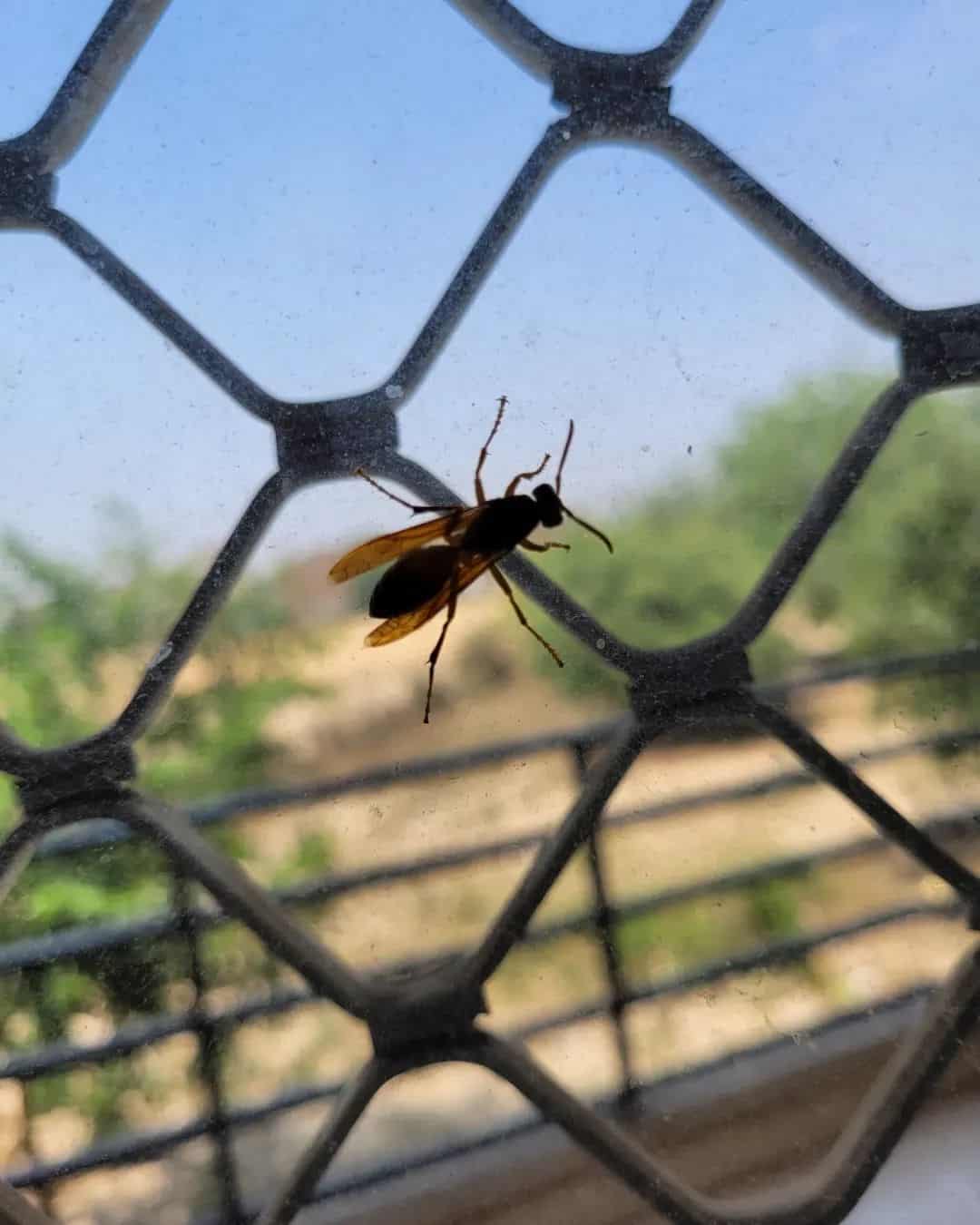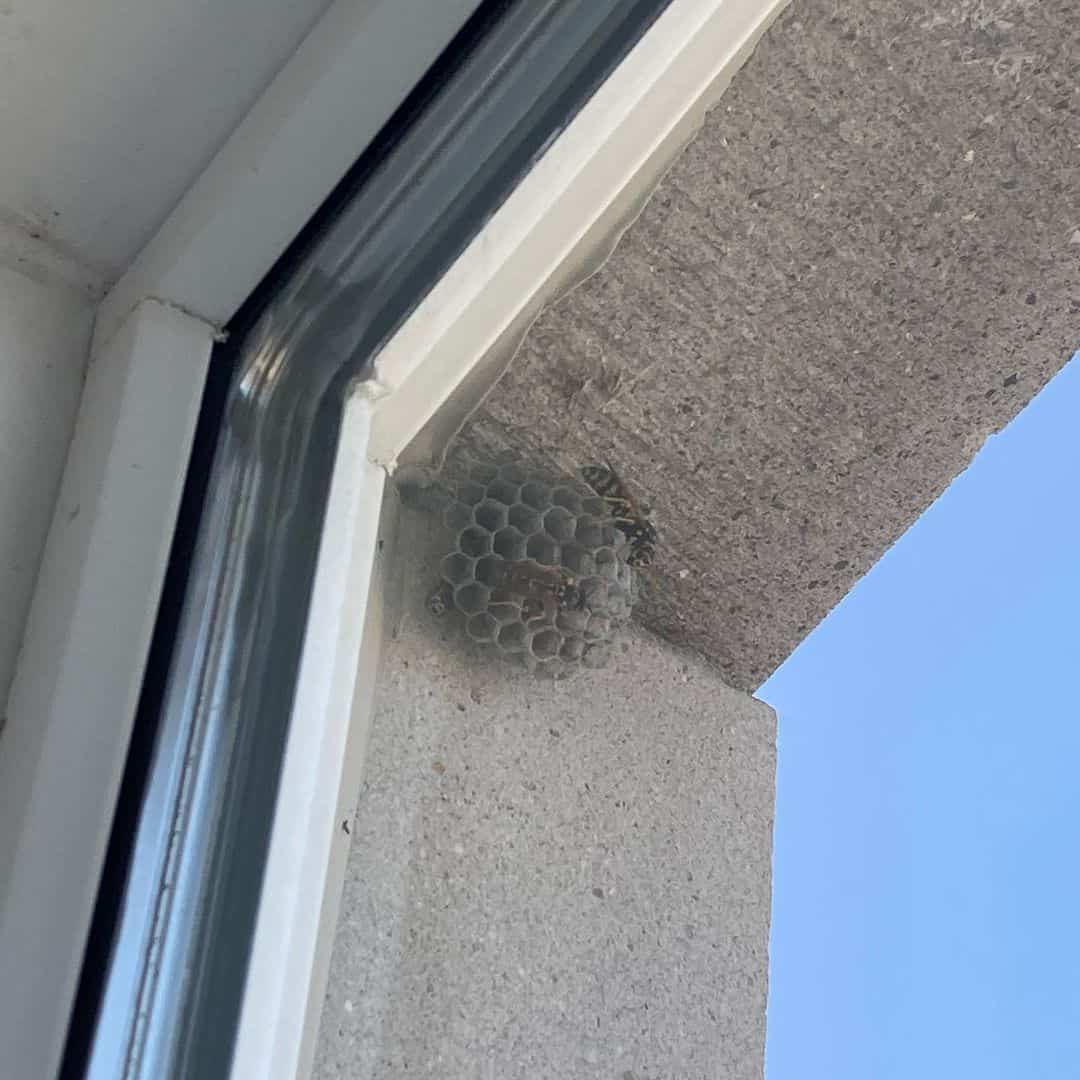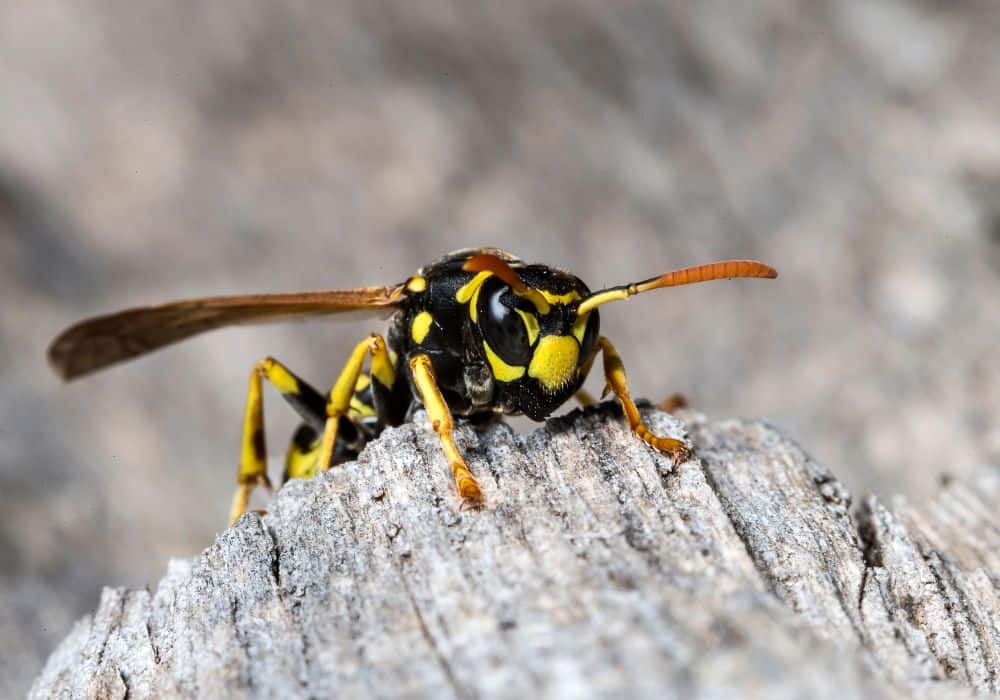From time to time, it happens that we get some uninvited guests in our house, known as wasps. Unlike bees, which are smaller and less aggressive, wasps are very territorial, aggressive, and have a more potent venom which makes them the house enemy No. 1.
This means that getting a wasp out of your house may be a challenge, especially if you are afraid, and let’s be honest, who is not afraid of a large, black, and yellow-striped stinger with wings?
So, in this article, we will discuss what to do with wasps in-house, how to get rid of them, their behavior, and some other interesting information!
How Do Wasps Enter the House?
Wasps usually enter the house through open windows. However, have you encountered a wasp in your house without an open window or a door?
It will make you wonder where it came from and panic because not many people can calmly sit while a large wasp is cruising through their living room! The most commonly seen wasp in the US is the yellow jacket.
Just like the name implies, they have distinctive black-yellow stripes. If you see a similar flying insect that is bigger, then you are probably dealing with hornets.
Although the window is their preferred entry point, they can enter your house through small crevices and cracks. Let’s check some other ways they come into the house.
1. Attics
For certain wasp species, such as paper wasps, attics are usually the preferred entry of choice. Paper wasps are vespid wasps that got their name due to the paper-like nests that they make. They are not particularly aggressive unless you are near their nest and they feel threatened.
Compared to regular wasps, these are brownish with yellow coloration and a “small waist.” They like to make their nest in the attics, and if your attic has any crevices and cracks, these wasps will find them and make themselves feel at home.
Attics are attractive to these wasps because they are a good shelter; they are usually warm and protected from inclement weather and other elements that may disturb them. Most commonly, you will see paper wasps building nests in wall voids.
Wasp nests typically last 3 to 4 months, but if the queen decides your attic is her place, you will have a wasp infestation next year. If you notice that wasps are coming from the ceiling, they have most likely taken over your attic, especially if you rarely go up there!
2. Chimney and Vents
Although we use chimneys and vents for specific purposes, they can also serve as a nice location for wasp nesting. We often forget to cover the vent or the chimney, or the covers were not adequately installed or maintained.
You can easily find the wasp nest if you can detect where they are coming from; if you see that wasps are coming from your bathroom or kitchen, the chances are that you have an open vent.
If the wasps enter your house from the fireplace, the nest is in the chimney or flue pipe. The solution to this problem is properly covering the chimney and maintaining it regularly by checking whether you have some squatters inside.
The sooner you notice the nest, the easier it will be to deal with it. You will probably have to use pesticides to exterminate them.
3. Basement and Porch Ceilings

Image Credit: ta_ma_sha.farm
Like the attic, the basement is also a part of the house that we seldom use, making it ideal for these pests. Basements are usually dimly lit, allowing the wasp to find a nesting site and lay eggs peacefully without any interruptions.
If you found a nest in your basement, a common occurrence, we suggest you call a professional or pest control, especially if they are alive, healthy, and flying around.
Wasps will sting for no reason, and the issue is that some people are allergic to their venom, which can lead to death if not treated immediately.
What you can do is seal any crevices that you notice, although insects always seem to find an open vent or a crack to enter your house.
Wasps also like to form a nest on porch ceilings or even under the patio because it provides perfect conditions for their nesting. The nest is often near the house, such as the patio or maybe a barn.
You never know whether they will eventually enter your house and cause some trouble, so it is better to treat the problem.
4. Trash Cans
You are probably thinking, what do wasps do with trash bins? Wasps like to eat nectar, honey, fruits, and small insects. However, adult wasps feed strictly on sugars, and we like to eat various sweets and dispose of their wrappers in the trash cans.
Therefore, wasps see trash cans as a food source and are naturally drawn to them because various sugars, proteins, and fruits are abundant. They like to forage the garbage, especially when the food becomes scarce, like in late summer and fall.
Also, there are always crumbs and spills around the can, which also attracts them. Just like bees, wasps also like to drink sugary sodas.
To deal with this issue, you can buy various sprays and deterrents and apply them on the trash can and around it.
How to Get Rid of Wasps?

Image Credit: christinagulu
You can take several steps to try to rid your home of these pests. If you do not feel comfortable around wasps and fear them, then maybe it is better to call pest control rather than risk yourself getting stung.
Here are some of the common ways to get rid of wasps!
1. Use Vinegar
Vinegar has a distinctive and protruding smell, so some people avoid cleaning with it! Although it will get rid of stains just fine, the smell is problematic and long-lasting. When dealing with wasps, this pungent smell is perfect for wasps!
Unlike humans and most animals repelled by the smell of vinegar, wasps actually like it and are naturally attracted to acetic acid.
Vinegar mainly contains water and varying amounts of acetic acid from 3% to 5%, making it perfect for various solutions to lure and trap the wasps. Here is what you need to do: mix apple cider vinegar with water and sugar in a larger pot or a bowl.
This combination of “wasp trap” is perfect for attracting and then killing the wasps because they cannot resist it, and they usually drown in it. Leave the trap on your window or area where you often see wasps.
You can also make a vinegar solution, just mix 1/2 cup of white vinegar with 1/2 of lukewarm water and pour it into a spray bottle. Apply it to the area where you see the wasps congregate.
You can add a few drops of an essential of your choice, such as (peppermint, eucalyptus, or lemongrass oil) to pack a punch!
2. Use Peppermint Oil
Essential peppermint oil is known as a repellent for various insects, including wasps. Most people like to use peppermint oil solution or buy peppermint-oil-based wasp and hornet killer spray such as Wondercide.
If you have peppermint oil and dish soap, you can easily make the solution at home; all you need to do is mix a couple of drops of the oil with two or three tablespoons of dish soap and then pour it into a bottle filled with water. Shake well before use!
3. Use Essential Oils Solution
Peppermint oil is not the only oil known to aid with these stubborn flying pests! According to the research done by the Journal of Pest Management Science, lemongrass oil, clove, and geranium combined are excellent repellents for wasps!
Using these oils, you can make a DIY solution in a spray bottle; just mix a couple of drops of each oil and fill the rest with water.
Mix it nicely and apply it on areas convenient for wasps to build nests, such as porch ceilings near basement doors, visible crevices, and cracks. You can also use this solution on your plants; do not worry; the solution will not harm your plants!
4. Force Them Out
If you do not want to meddle with them and kill them, just relocate them, there are a couple of things that you can do!
The most logical thing would be to open a window that is closest to the wasp and then close off windows and doors to that room and in that room so the wasp cannot fly in another direction.
If the wasp is flying frantically, you can try with a fan or a hair dryer; when the wasp gets close to a window opening, that is your clue to blow the fan or the drying in the direction of the window.
How to Get Rid of a Wasp Nest?
Dealing with a wasp’s nest is a bit trickier than trying to force out a wasp from your living room! Therefore, you should take some precautions so you do not get attacked by the swarm of wasps.
You will need the following:
- Long Pants
- Long-sleeved T-shirt
- Protective Gloves
- Veil or scarf
- Aerosol Wasp Spray
- Plastic Bags
- Broom
Step 1: Identify the Species of Wasp
You are probably wondering why knowing what species of wasps you’re dealing with is important. Here is why some types of wasps are more aggressive and dangerous than others.
For example, hornets are known as the most aggressive wasps, and their stinger can go through protective clothing. On the other hand, mud daubers are considered to be very docile.
Learning which type of wasp nest or infestation you have at home will help you decide whether to exterminate them yourself or leave it to the professionals.
Here is a list of the most aggressive wasps you should avoid at any cost!
Important Note: If you are allergic to wasps and bees, call a professional or animal pest control regardless of what type of wasp you are dealing with!
Step 2: Put on the Protective Gear
The best option is to use a bee-keeping suit, but many of us do not have this suit, so you will have to resort to regular clothing, which can be equally effective. Put on some long pants, a shirt with long sleeves, gloves, and most importantly, a veil over your face.
Step 3: Apply the Aerosol Wasp Spray
After putting on the protective gear, it’s time to use the spray! We suggest that you spray the nest during the night because the wasps are usually the least active at night.
These sprays usually have a range of 15 to 20 feet, so make sure that you stay as further as possible but still be able to reach the nest with the spray mist.
Wasp nests have a hole or an opening at the bottom, also known as their entry point. Spray the bottom and the entrance to the nest for at least 15 seconds. You can apply it to other holes or entrances if you notice them.
If the wasps start to come out of the nest, leave the area immediately.
Important Note: If the nest’s location is unreachable or you think it may expose you to additional danger, call the professionals. In most cases, wasps build their nest very high, and we can usually access them with a ladder, which robs us of our chance to escape quickly in case the wasps start to emerge.
Step 4: Monitor the Nest
You will probably have to reapply the spray depending on the type of wasps and the nest size. Sometimes it will take several times to kill the entire nest, and in other situations, if you have a small paper wasp nest, you can kill them with a dish soap solution.
Step 5: Knock Down the Nest
Using a broom or stick, you can know down the nest once it is dry. When the nest is dry, it means it is empty and wasp-free. Then, push the nest or the remnants into a plastic bag, seal it, and dispose of it.
Conclusion
Wasps can enter our house through numerous crevices, cracks, and openings.
Sometimes that is inevitable, so it is important to learn where they enter the house to seal those places and how to deal with them after they have made their way to your basement, attics, or porch ceiling.
This article covers where they usually enter the house and how to get rid of wasps and wasp nests!
Have you ever had a wasp nest in your house or near it? How did you deal with it? Please share your experience with us! If you have any questions, do not hesitate to ask!
